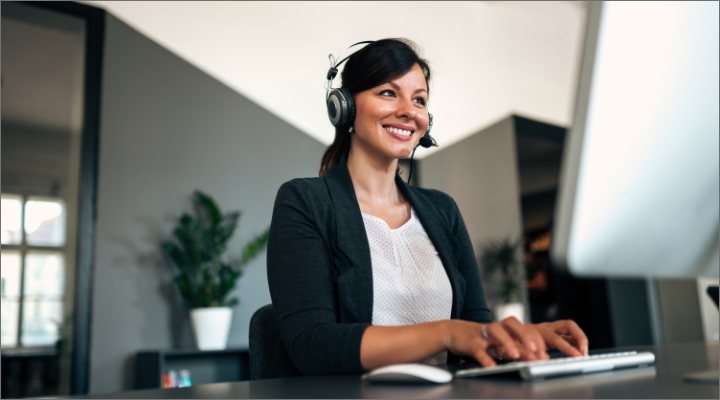All Categories
Featured
Table of Contents
- – Whats The Best What Is An Answering Service And...
- – Who Is The Best Virtual Receptionist Perth - L...
- – What Is The Best What Is An Answering Service?...
- – What Is The Best Telephone Answering Service ...
- – What Is The Best Virtual Receptionist Perth -...
- – How Much Should I Pay For What Is An Answeri...
Whats The Best What Is An Answering Service And Why Use One? To Buy
This gadget and its successors were developed by Sava Jacobson, an electrical engineer with a private consulting business. While early answering makers used magnetic tape technology, many modern-day equipment uses strong state memory storage; some devices utilize a combination of both, with a solid-state circuit for the outbound message and a cassette for the inbound messages.
"toll conserving" listed below) (virtual telephone answering). This is beneficial if the owner is evaluating calls and does not want to consult with all callers. In any case after going, the calling celebration ought to be informed about the call having been responded to (for the most part this begins the charging), either by some remark of the operator, or by some welcoming message of the TAD, or addressed to non-human callers (e.
This holds especially for the Little bits with digitally saved welcoming messages or for earlier devices (before the increase of microcassettes) with an unique unlimited loop tape, separate from a second cassette, committed to recording. There have actually been answer-only devices with no recording capabilities, where the welcoming message needed to inform callers of a state of existing unattainability, or e (business call answering service).
Who Is The Best Virtual Receptionist Perth - Local Phone Answering Service Provider In My Area

about accessibility hours. In recording Littles the greeting usually contains an invite to leave a message "after the beep". An answering maker that utilizes a microcassette to record messages On a dual-cassette answerphone, there is an outgoing cassette, which after the defined variety of rings plays a pre-recorded message to the caller.

Single-cassette answering devices contain the outbound message at the start of the tape and incoming messages on the staying area. They initially play the statement, then fast-forward to the next available space for recording, then record the caller's message. If there are lots of previous messages, fast-forwarding through them can trigger a substantial delay.
This beep is often referred to in the greeting message, asking for that the caller leave a message "after the beep". TADs with digital storage for the tape-recorded messages do not show this delay, naturally. A little bit may offer a push-button control facility, whereby the answerphone owner can ring the home number and, by going into a code on the remote telephone's keypad, can listen to tape-recorded messages, or delete them, even when far from house.
What Is The Best What Is An Answering Service? For The Price

Therefore the device increases the variety of rings after which it responds to the call (generally by 2, leading to four rings), if no unread messages are currently stored, however answers after the set number of rings (generally 2) if there are unread messages. This permits the owner to find out whether there are messages waiting; if there are none, the owner can hang up the phone on the, e.
Some makers likewise permit themselves to be remotely activated, if they have actually been turned off, by calling and letting the phone ring a particular a great deal of times (usually 10-15). Some provider abandon calls already after a smaller sized variety of rings, making remote activation impossible. In the early days of Littles an unique transmitter for DTMF tones (dual-tone multi-frequency signalling) was regionally needed for remote control, considering that the previously used pulse dialling is not apt to communicate proper signalling along an active connection, and the dual-tone multi-frequency signalling was carried out stepwise.
Any inbound call is not identifiable with regard to these residential or commercial properties in advance of going "off hook" by the terminal devices. So after going off hook the calls must be changed to appropriate gadgets and only the voice-type is right away available to a human, however maybe, nevertheless need to be routed to a LITTLE BIT (e.
What Is The Best Telephone Answering Service Melbourne Cbd Australia To Buy Right Now
What if I told you that you do not need to really pick up your gadget when responding to a customer call? Another person will. So hassle-free, right? Responding to telephone call doesn't require someone to be on the other end of the line. Efficient automated phone systems can do the trick just as effectively as a live agent and in some cases even better.
An automatic answering service or interactive voice reaction system is a phone system that communicates with callers without a live person on the line - virtual telephone answering. When companies use this technology, customers can get the response to a question about your service simply by using interactions set up on a pre-programmed call circulation.
Although live operators upgrade the customer care experience, numerous calls do not require human interaction. An easy recorded message or guidelines on how a customer can recover a piece of information usually solves a caller's immediate requirement - answer phone service. Automated answering services are an easy and effective way to direct inbound calls to the best person.
What Is The Best Virtual Receptionist Perth - Local Phone Answering Service Company
Notification that when you call a business, either for support or product inquiry, the first thing you will hear is a pre-recorded voice greeting and a series of options like press 1 for customer care, press 2 for inquiries, and so on. The pre-recorded alternatives branch out to other choices depending on the customer's selection.
The phone tree system helps direct callers to the right individual or department using the keypad on a cellphone. In some instances, callers can utilize their voices. It deserves noting that auto-attendant alternatives aren't restricted to the 10 numbers on a phone's keypad. As soon as the caller has selected their very first alternative, you can create a multi-level auto-attendant that utilizes sub-menus to direct the caller to the right sort of assistance.
The caller does not have to interact with a person if the auto-attendant phone system can manage their concern. The automated service can route callers to a worker if they reach a "dead end" and need help from a live agent. It is expensive to hire an operator or executive assistant.
How Much Should I Pay For What Is An Answering Service? - Ruby Blog?
Automated answering services, on the other hand, are considerably cheaper and offer substantial expense savings at approximately $200-$420/month. Even if you do not have actually committed staff to deal with call routing and management, an automatic answering service improves performance by allowing your group to concentrate on their strengths so they can more effectively spend their time on the phone.
A sales lead routed to customer support is a lost shot. If a consumer who has item concerns reaches the incorrect department or gets incomplete answers from well-meaning employees who are less trained to handle a specific kind of concern, it can be a cause of frustration and discontentment. An automated answering system can lessen the number of misrouted calls, thereby helping your employees make better use of their phone time while freeing up time in their calendar for other jobs.
With Automated Answering Systems, you can create a tailored experience for both your staff and your callers. Make a recording of your main greeting, and simply upgrade it frequently to show what is going on in your company. You can develop as many departments or menu options as you want.
Table of Contents
- – Whats The Best What Is An Answering Service And...
- – Who Is The Best Virtual Receptionist Perth - L...
- – What Is The Best What Is An Answering Service?...
- – What Is The Best Telephone Answering Service ...
- – What Is The Best Virtual Receptionist Perth -...
- – How Much Should I Pay For What Is An Answeri...
Latest Posts
Dependable Live Phone Answering
Tailored Answering Service Pricing Near Me – Albury
Sought-After Virtual Phone Answering – WA
More
Latest Posts
Dependable Live Phone Answering
Tailored Answering Service Pricing Near Me – Albury
Sought-After Virtual Phone Answering – WA